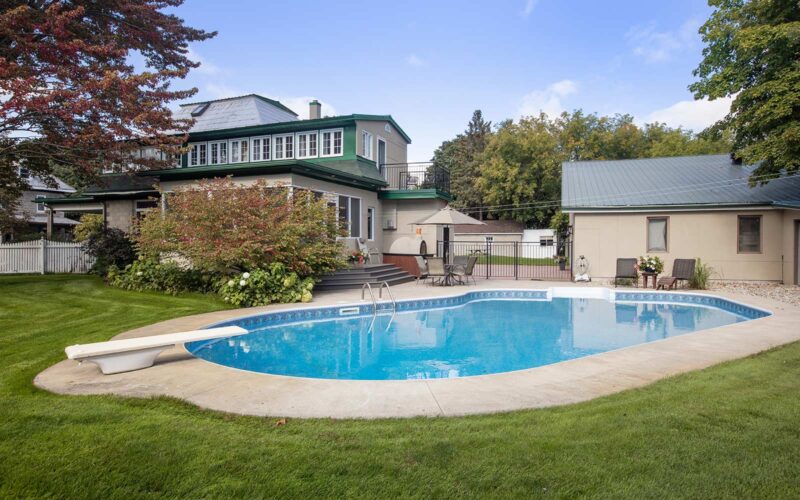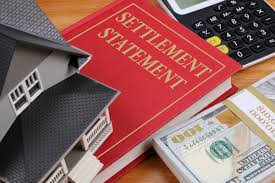Appurtenances real estate is anything that is attached to the property that is irremovable, whether it’s being sold or transferred as an inheritance. You’ll also learn what appurtenances real estate is all about as well as the example.
Appurtenances Real Estate
You can simply define appurtenance real estate as anything that is attached to the property that cannot be removed, whether it’s being sold or transferred as an inheritance. To consider something to be a physical appurtenance in real estate, you must define or meet the following criteria:
- You must attach the appurtenance in such a manner that it is everlasting. Things must, for instance, be bolted to the house, fixed into the foundation, or wired into the house. Personal property is anything that you can simply remove and does not pertain to real estate.
- You must plan on retaining the appurtenance with the property indefinitely.
- The appurtenance must be detachable without inflicting damage on the apartment’s structure. It is part of the real estate, isn’t it something distinct if a thing is so solid that removal would ruin part of the land? A ceiling fan, for instance, can be removable and replaced with a ceiling light. Or a shed can be dismantled and uninstalled. Though neither project is simple or quick, neither ruins the property.
Example of Appurtenances Real Estate
Appurtenances can be found in a variety of places on real estate. Some are found inside the house, while the majority are found on the exterior. Here is some example of appurtenances real estate in more detail.
#1. Within the House
The majority of the goods in a house are classified as private possessions. There are a few exceptions, though. Appurtenances are items that are connected to the house’s electrical system, such as lighting and ceiling fans. Although you can disconnect this equipment. A new owner normally expects the fans and lights to be in the same condition as when they bought the house. Cabinets in the bathrooms and kitchen, built-in bookcases, and hard-wired appliances such as the air conditioner and heater are all part of it.
#2. Objects Attached to the Land
Since they’re not connected to the main house. A garage or a factory on the property next to your house are called appurtenances. When selling your property, it’s always a great idea to provide a list of appurtenances. Because a current owner may prefer one house over another due to a major huge factory or a barn for their livestock.
#3. The Backyard of the House
Another example of appurtenance real estate is the backyard of your house. Which may have elements that you have installed to make it comfortable. These elements include a garden, pond, marble tiles, pumps, an in-ground swimming pool, fences, and trees.
It’s important to define what you want in appurtenances real estate and know what’s all in the transaction when you buy a house. To avoid getting into a shocking state when you settle in.
#4. Easements on Land
An easement is a movable asset that allows another person to use your property. This type of access generally has limits and a precise aim. A shared roadway or pathway that enables land-locked property reachable is a great example of an easement. Although this roadway may cross the personal property, you have entrance to the neighboring home because of a real estate easement. Since the easement secures you, if the owners of the property with the roadway sells, the current buyer cannot refuse your entrance. Drainage runoffs, utility poles or pipelines, and mailbox access are all common easements. Because not all easements are in a deed, make sure you fully comprehend how the whole stuff works.
#5. Natural Resources Found on the Land
Natural resources are another example of appurtenances in real estate. Land can occasionally include oil, minerals, and other resources like a brook. The possessor can opt to utilize these resources because they belong to the land. When an individual acquires a house, the buyer takes over the sovereignty of the resources.
#6. Rental Property
Rental homes provide the same amenities as a home in which the owner resides. The belongings, however, are the property of the landowner, not the tenant. Many leases specify which items, like the refrigerator and microwave, belong to the property, so there is no dispute about who owns them. If a renter makes improvements to the property or puts a modern heater,(which is an example of appurtenances real estate) such goods remain with the house after the person moves out, irrespective of the person that installs such on the property.
What Then Are Not Appurtenance
You can’t define many objects in a property that aren’t regarded as appurtenances real estate, even though there are multiple varieties. Personal items, furnishings, couches, lighting, and carpet padding are all included. These goods are yours to keep and you should remove them when you leave the property.
Real Estate Easement Appurtenances
An easement is a freedom to utilize a property that is not yours for a precise purpose that flows with the property. You can define an easement appurtenances real estate as a sort of easement that connects two properties, like a subject tenement and dominant tenement estates.
The dominant property is the one that profits from the easement, while the servient property is the one that enables it. Another route to a nearby park, access to a facility, or a right of way to the roadway is all examples of easements.
How You Make an Easement Appurtenant
The list below are some ways you can make appurtenance easements
#1. Easements Explicit
This is the most prevalent method of creating an easement appurtenant. It’s when an adjacent estate buys or sells an easement. It’s either made by a written easement contract between the two property owners or by a judge’s ruling.
#2. Certificates of Estoppel
The easement contract should specify an agreed-upon type of estoppel certificate and compel each person to deliver it when the other requests it. If there is no presentation of the estoppel certificate, there will be a presumption that the easement contract is to be in complete power and effect. As well as the other person is in strict conformity with all of their duties. An estoppel certificate from the owner of an appurtenant easement certifying its legitimacy is commonly utilized by a prospective investor or mortgage provider.
#3. Easements With Prescriptions
Every region has its own set of rules for obtaining a prescription for easements. For the home invader to obtain the easement, the intrusion must be public, unfriendly, and happen over a period of time.
Due to how they’ve utilized that path, a home invader who passes through your estate daily to walk to a public reservoir may have acquired an easement to your estate. Similarly, the rules and legislation governing an invader’s right to a prescription for easement differ by state. Easements with prescriptions may be susceptible to your thorough research as a landowner to avoid.
#4. Title Insurance
The recipient of an appurtenant easement should make sure that his dominant property owner’s title insurance policy likewise covers the recipient’s claims to the appurtenance easement as an amenity for the advantage of the dominant estate.
#5. Necessity Easement
Necessity easement takes place once there is a splitting of the proprietorship of the property.
#6. Construction and Upkeep
If the easement requires infrastructure projects, such as a road, drainage system, or drainage channels, the contract should define who will do the tasks and how much each party will pay. Upkeep responsibilities should be clear in the contract, with solutions available to the other partner if the responsible person refuses to comply.
#7. Indemnification/Insurance
The recipient should hold the owner harmless from any claims, damages, or costs arising from physical damage or bodily harm caused by the recipient’s use of the easement space. If the recipient is going to labor on the servient estate, he or she should have the obligation to carry enough indemnification or insurance that includes the owner as an additional layer of protection.
#8. Easement by Implication
When a vast parcel of a property goes into a subdivision, each parcel of property’s rights remains the same as they were before the partition. If the only route to getting to the roadway or a facility is through a certain property, an easement by implication takes place.
#9. Title Search
On the servient estate, a title search is important and the performance should be to ensure who owns the property and any current mortgages. The approval of the easement must be by the landowner and any current mortgagees. The mortgage lenders must consent to reduce their loans to the easement arrangement so that the individual will not lose the easement if the mortgage lenders seize the property.
#10. Costs
Any fees that the recipient must pay, such as a part of property taxes or upkeep charges, should be specified in the contract.
Difference Between Easement Appurtenance and the Gross
Easements appurtenant to the property are related to the property and are components of the deed. If the servient estate is purchased, the current buyer must enable the dominating estate’s possessor to keep using the land. In the same way, if the dominating property is purchased, the easement will be transferred to the current owner.
In one important way, an easement appurtenance differs from a general easement. The main distinction is that with easement appurtenance, the dominating estate – say, your neighbor – owns the property. The beneficiaries of an easement in gross aren’t properties; instead, they’re persons like utility businesses.
Easements appurtenant are attached to the property and conveyed with the ownership, which is not so in a gross easement. The servient property can’t effectively transfer entitlements to an easement with a gross easement.
Why Is Appurtenance Important?
All property owners should be familiar with the idea of appurtenance. However, this is a rare occurrence. As a result, it’s a good idea to grasp why it is important in real estate deals.
Most purchasers examine properties and make selections about what to acquire and what to leave depending on specific features. Have in mind that an appurtenant is something that is connected to a piece of property. When you buy a house, some features come standard, such as gates, windows, kitchen cabinets, and the heating and conditioning system.
You have a claim for appurtenance if the seller refuses to cooperate, even though the item has all the necessary evidence to support your claim.
That’s the reason you should always inquire about what is included and not with the property you intend to buy. And if there’s anything you want in the property but isn’t, make sure to insert a condition in your contract to avoid any future issues.
Important Factor
It’s a bit hard to grasp the nuances of easements, yet it’s crucial, especially if you’re a real estate owner. So, whether you’re purchasing, trading, or retaining your land, your improved knowledge of the easement appurtenance will so much benefit you.
Irrespective of where you are in the residential transaction, studying more about property boundaries will help you have a better understanding of your legal standing.
Is Appurtenance a Fixture?
A fixture is both important to the operation of a business on the property and removable, as a contrast to an appurtenance, which is a permanent improvement or addition.
Is a Garage an Appurtenant Structure?
Appurtenant structures include but are not limited to, a garage, deck, storage shed, woodshed, pump house, upland retaining wall, and fence; they are typically connected to the use and enjoyment of a single-family home.
What Is the Best Definition of an Appurtenance in Real Estate?
An appurtenance is defined as property rights or things that are permanent and transferred along with the sale of the property. Real property, which we previously defined as being immovable or fastened to the land, is an appurtenance. Appurtenances relate to the land since they are annexed to it.
Which Is a Characteristic of an Appurtenant Easement?
This form of easement’s main characteristic is that it is held by the owner in their capacity as the dominant tenement. The easement immediately transfers with the land if the dominating tenement is given away or sold.
What Are the Primary Differences Between an Easement Appurtenant and an Easement in Gross?
If an easement is a part of the property, it automatically passes to the subsequent owner and can be used. On the other hand, an easement in gross happens when there is only one piece of land and no dominating estate. As a result, there is no dominating estate in a gross easement.
What Is the Most Common Form of Easement in Gross?
In the US, utility company easements are the most prevalent kind of easement. A utility easement enables a utility provider to retain equipment required to provide utility services or to service a portion of a property. In general, pipeline easements are also regarded as common easements.
What Is a Negative Easement Appurtenant?
an authorization granted by an easement to use another’s property for a specific purpose. A right that allows one person to restrict another person from using their property in a particular way.
Conclusion
Appurtenances real estate is anything that is attached to the property that cannot be removed, whether it’s being sold or transferred as an inheritance.
APPURTENANCES REAL ESTATE FAQs
What is the difference between appurtenance and fixture?
An appurtenance is something that is with or attach to something like a house, whereas a fixture is (legally) something that is put in place, particularly permanent equipment or other private possessions that regard as part of a property and hence, bought with it.
What is not an appurtenance?
Appurtenances are private possessions that pertain to the individual selling the house or estate and are effortlessly removable. Appurtenances do not comprise furniture, decorations, household appliances, paintings, or lamps, but they do include ceiling fans and lights.






